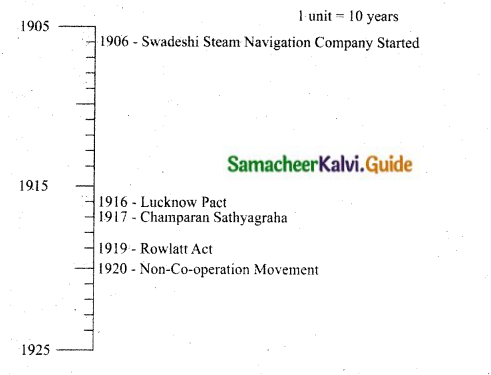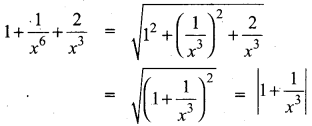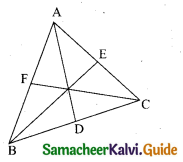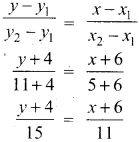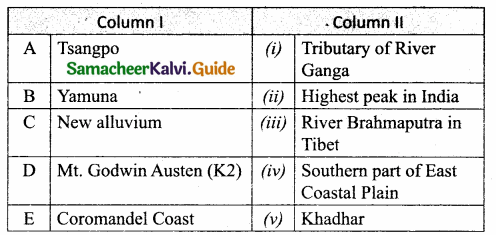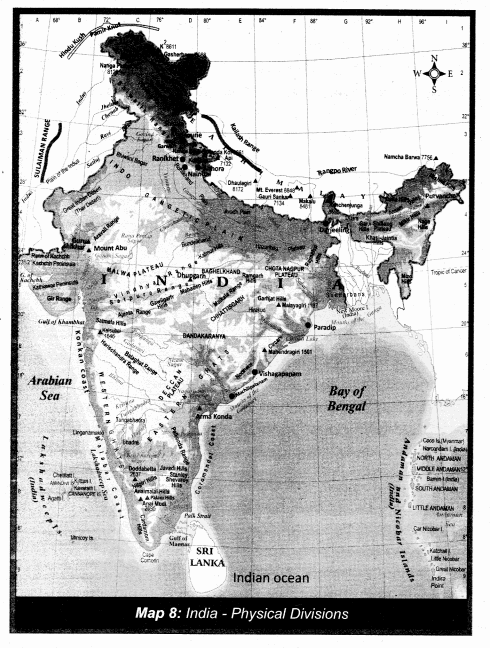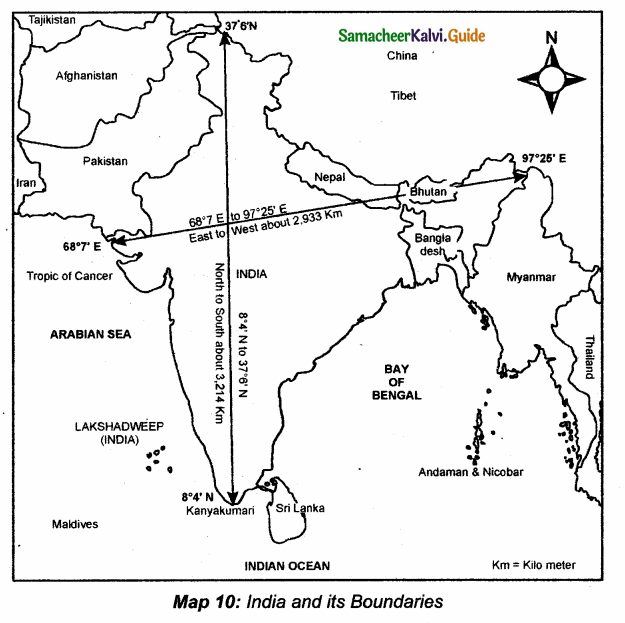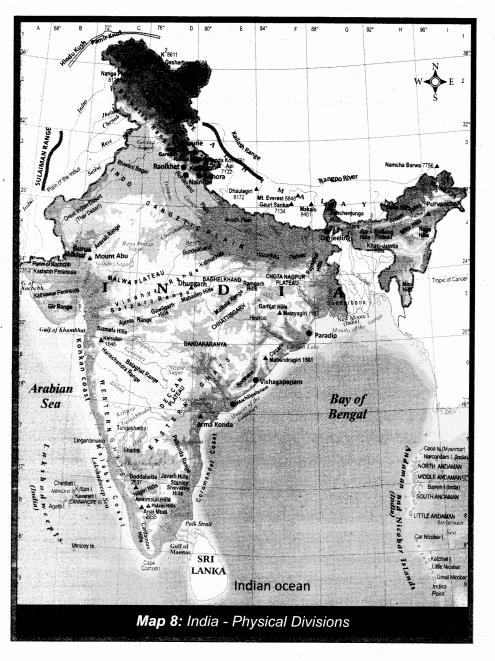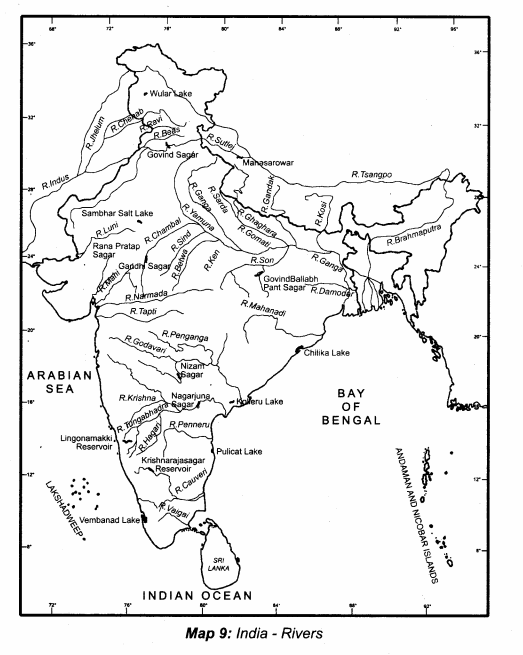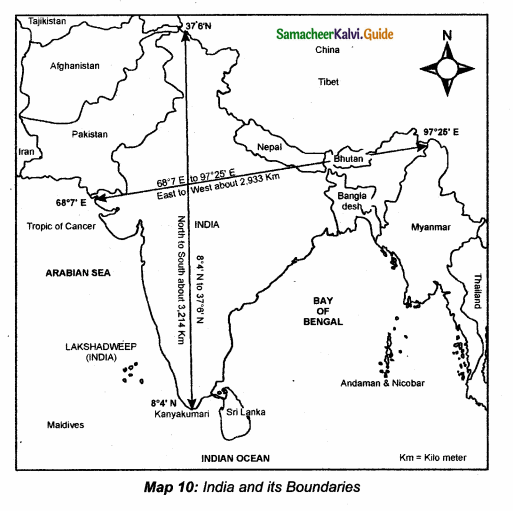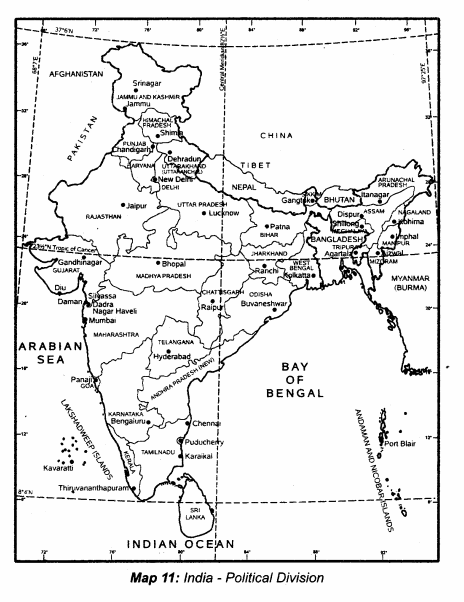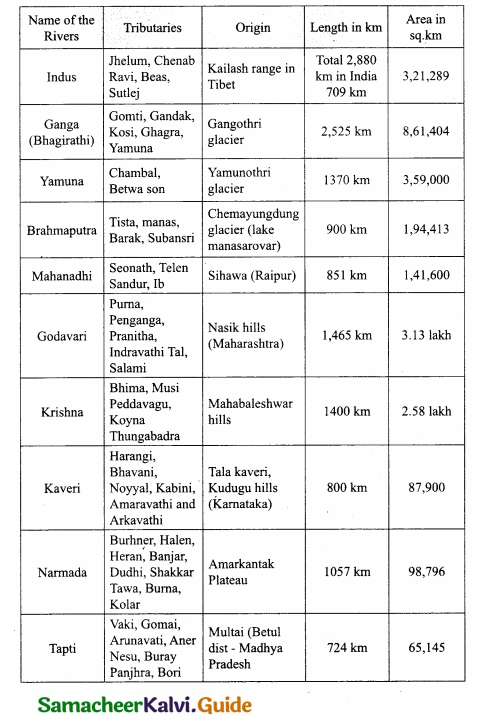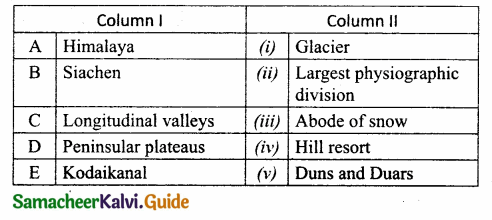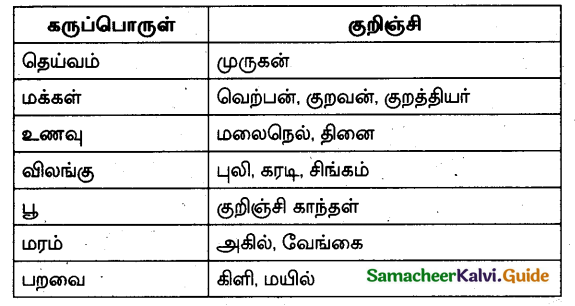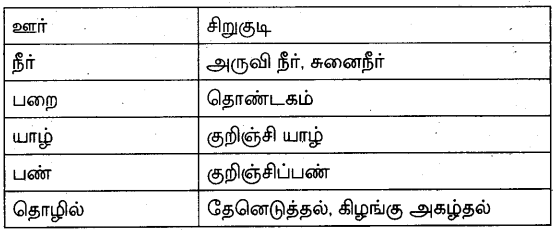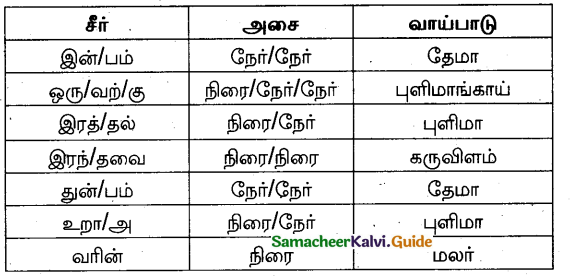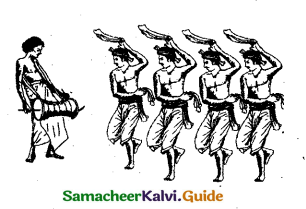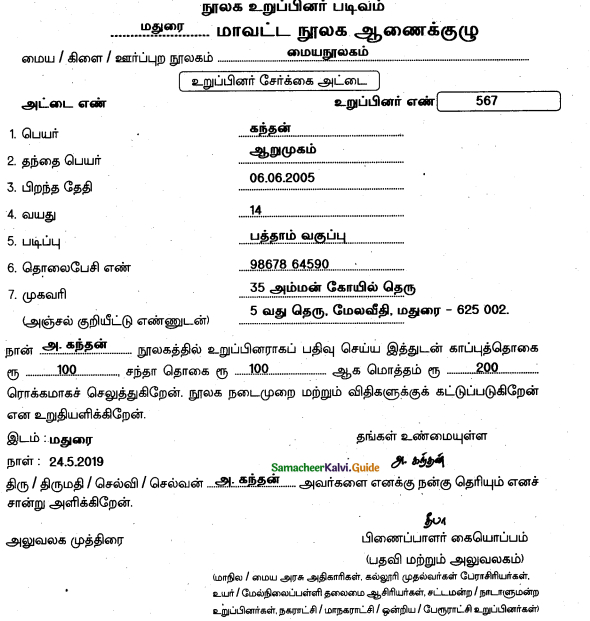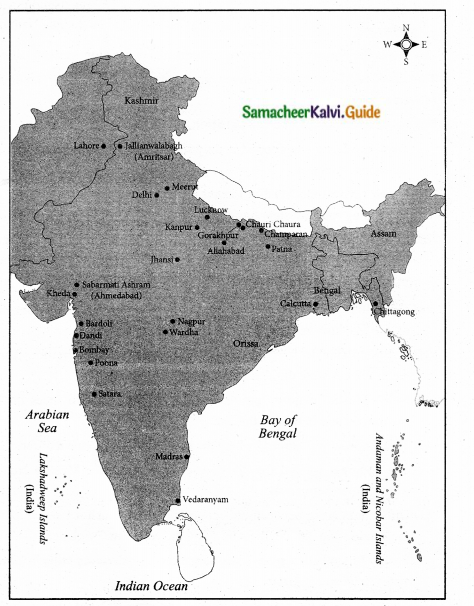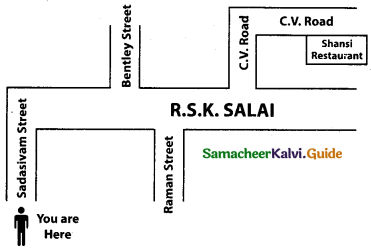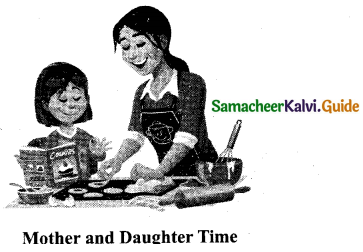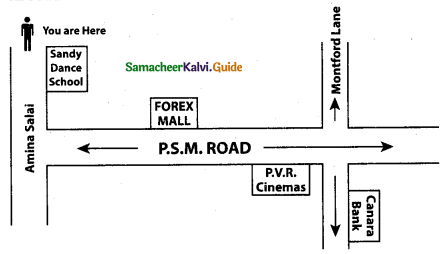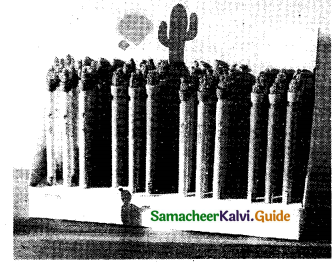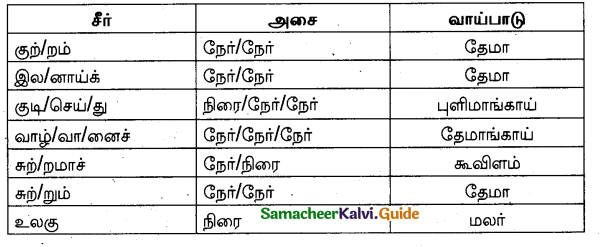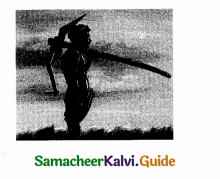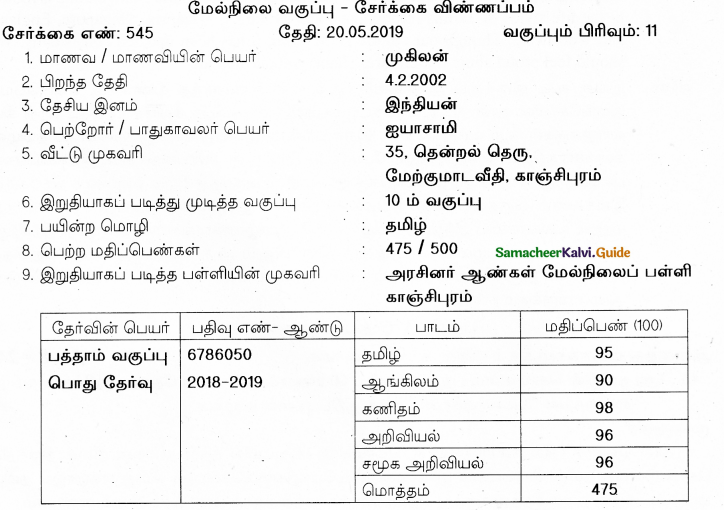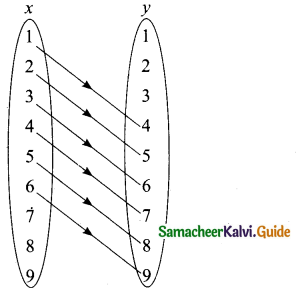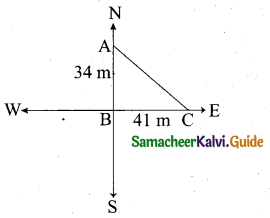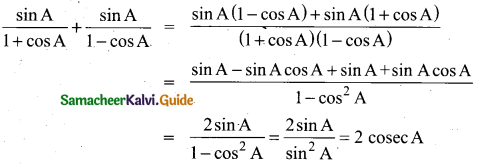Students can download 10th Social Science History Chapter 10 Social Transformation in Tamil Nadu Questions and Answers, Notes, Samacheer Kalvi 10th Social Science Guide Pdf helps you to revise the complete Tamilnadu State Board New Syllabus, helps students complete homework assignments and to score high marks in board exams.
Tamilnadu Samacheer Kalvi 10th Social Science Solutions History Chapter 10 Social Transformation in Tamil Nadu
Samacheer Kalvi 10th Social Science Social Transformation in Tamil Nadu Text Book Back Questions and Answers
I. Choose the correct answer
Question 1.
…………….. was the pioneer of social Reformers in India.
(a) C. W. Damotharanar
(b) Periyar
(c) Raja Rammohan Roy
(d) Maraimalai Adigal
Answer:
(c) Raja Rammohan Roy
Question 2.
…………… established a full-fledged printing press in 1709, at Tranquebar.
(a) Caldwell
(b) F.W.Ellis
(c) Ziegenbalg
(d) Meenakshisundaram
Answer:
(c) Ziegenbalg
![]()
Question 3.
…………….. was the official newspaper of the Self Respect Movement.
(a) Kudi Arasu
(b) Puratchi
(c) Viduthalai
(d) Paguththarivu
Answer:
(a) Kudi Arasu
Question 4.
Periyar wanted religion to be replaced by ………………
(a) Nationalism
(b) Iconoclasm
(c) Rationalism
(d) Spiritualism
Answer:
(c) Rationalism
Question 5.
…………….. founded Adi Dravida Mahajana Sabha in 1893.
(a) Rettaimalai Srinivasan
(b) B.R. Ambedkar
(c) Rajaji
(d) M.C. Rajah
Answer:
(a) Rettaimalai Srinivasan
Question 6.
India’s first organised trade union, the Madras Labour Union was formed in ………….
(a) 1918
(b) 1917
(c) 1916
(d) 1914
Answer:
(a) 1918
Question 7.
…………….. was established by the Justice Party Government for the selection of Government officials.
(a) Staff Selection Board
(b) Public Service Commission
(c) Provincial Staff Recruitment Board
(d) Staff Selection Commission
Answer:
(a) Staff Selection Board
Question 8.
……………. was the first elected Legislative Council Member from the depressed class in Madras Province.
(a) M. C. Rajah
(b) Rettaimalai Srinivasan
(c) T.M. Nair
(d) P. Varadarajulu
Answer:
(a) M. C. Rajah
![]()
II. Fill in the blanks
- ……………… was the first non-European language that went into print.
- The College of Fort St. George was founded by ………………
- ……………… is considered the father of Tamil linguistic purism.
- ……………… was the first to approve participation of women in the electoral politics.
- The name Suriyanarayana Sastri changed in Tamil as ………………
- ……………… gave prominence to Tamil music.
- The first Woman Legislator in India was
Answers:
- Tamil
- F.W. Ellis
- Maraimalai Adigal
- Justice Party Government
- Parithimar Kalaignar
- Abraham Pandithar
- Muthulakshmi Ammaiyar
III. Choose the correct statement
Question 1.
(i) Thirukkural was one of the earliest Tamil literary texts to be published in 1812.
(ii) Maraimalai Adigal collected and edited different palm leaf manuscripts of the Tamil grammars and literature.
(iii) Robert Caldwell established the close affinity between the Dravidian languages in contrast with Sanskrit and also established the antiquity of Tamil.
(iv) Thiru. V. Kalyanasundaram was an early pioneer in Trade union movement.
(a) (i) and (1%) are correct
(b) (i) and (iii) are correct
(c) (iv) is correct
(d) (ii) anA (iii) are correct
Answer:
(b) (i) and (iii) are correct
Question 2.
(i) Margret Cousin was one of the founders of Women’s India Association.
(ii) Periyar spent his entire life campaigning against superstitions through Thinkers or Rationalists Forums he had formed.
(iii) Singaravelar was a staunch supporter of the Hindu Mahasabha.
(iv) Periyar emphasised that the caste system in South India is linked with the arrival of Brahmins from the North.
(a) (iii) and (iv) are correct
(b) (ii), (iii) and (iv) are correct
(c) (i), (ii) and (iv) are correct
(d) (ii) and (iii) are correct
Answer:
(c) (i), (ii) and (iv) are correct
![]()
Question 3.
Assertion (A): The Justice Party continued to remain in Government from 192CE1937 in Madras Presidency.
Reason (R): The Congress Party boycotted the Madras Legislature during this period of Dyarchy.
(a) Both A and R are correct
(b) A is correct, but R is not the correct explanation
(c) Both A and R are wrong
(d) R is correct, but it has no relevance to A
Answer:
(b) A is correct, but R is not the correct explanation
Question 4.
Assertion (A): As World War I was in progress, the British Government was considering the introduction of representative institutions for Indians after the war.
Reason (R): In 1920, Dyarchy as a form of Government was introduced in the provinces.
(a) A is correct, but R is not the correct reason
(b) Both A and R are wrong
(c) Both A and R are right
(d) A is wrong and R has no relevance to A
Answer:
(c) Both A and R are right
IV. Match the following

Answer:
A. (iv)
B. (iii)
C. (i)
D. (ii)
V. Answer briefly
Question 1.
Write a note on Tamil Renaissance.
Answer:
C.W. Damotharanar collected and edited different palm leaf manuscripts of the Tamil grammars and literature. U.V. Swaminathar took efforts to publish the classical texts. These triggered an intellectual revolution and it was popularly known as Tamil Renaissance. Tamil language and culture played a significant role in their identity construction. The introduction of printing press, linguistic research on Dravidian languages, etc., underpinned the process of Tamil renaissance.
Tamil was the first non-European language that went into print. In the nineteenth century, Tamil scholars like C.W. Damotharanar, and U.V. Swaminathar spent their lifetime in the rediscovery of the Tamil classics. This provided the Tamil people with a revelation about their heritage. Therefore, the rediscovery of ancient classics and their publication is considered the foundation of Tamil renaissance.
Question 2.
Highlight the contribution of Caldwell for the cause of South Indian languages.
Answer:
- In 1816, F. W. Ellis who founded the College of Fort St. George, formulated the theory that the south Indian languages belonged to a separate family which was unrelated to the Indo – Aryan family of languages.
- Robert Caldwell (1814-1891) expanded this argument in a book titled. A comparative grammar of the Dravidian (or) South Indian family of languages in 1856.
- He established the close affinity between the Dravidian languages in contrast with Sanskrit and also established the antiquity of Tamil.
![]()
Question 3.
List out the personalities who contributed to the revival of Tamil literature through their writings.
Answer:
C.W. Damotharanar, U.V. Swaminathar, F.W. Ellis, Robert Caldwell, Subramania Bharati, Thiru Vi. Kalyanasundaram, Singaraveiar, PanditViar lyotheethassar, Sundaram Pillar and Maraimalai Adigal.
Question 4.
Discuss the importance of Hindu Religious Endowment Act passed by the Justicite Ministry.
Answer:
- The Justice Party further concentrated on reforms in religious institutions.
- Tamil Nadu has a large number of temples and these commanded huge resources.
- In general, the resources were monopolised and exploited by the ‘ dominant caste in the society and led to mismanagement of public resources.
- The Justice Party introduced the Hindu Religious Endowment (HRE) Act in 1926 and enabled any individual irrespective of their caste affiliation to become a member of the temple committee and govern the resources of the religious institutions.
Question 5.
What do you know of the Cheranmahadevi Gurukulam incident?
Answer:
A Gurukulam was established in Cheranmahadevi by V.V.S. Iyer with the financial support of the Tamil Nadu Congress Committee. However, students were discriminated on the basis of caste. Brahmin and non-Brahmin students were made to dine separately. Periyar was disturbed to see the discrimination. He questioned the practice, and severely criticized it. Despite his objections, Congress continued to support the iniquitous practice in the Gurukulam. This disappointed Periyar.
![]()
Question 6.
Name the newspapers published by the South Indian Liberal Foundation.
Answer:
Dravidian in Tamil, Justice in English and Andra Prakasika in Telugu to propagate ideals of the Party.
Question 7.
Estimate Periyar as a feminist
Answer:
Periyar was a great feminist. He believed in gender equality and raised voice over the plight of women. He emphasized on women’s right to divorce and property. He objected the terms like “giving in marriage”. This, he said, treats woman as a thing. He wanted it to substitute by “valkaithunai,” (companion) a word for marriage taken from the Tirukkural. Periyar’s most important work on this subject is Why the Woman is Enslaved ? He believed that property rights for women would provide them a social status and protection. He welcomed equal rights for males and females in property, guardianship and adoption.
Question 8.
Explain the proceedings of All India Trade Union Congress Conference held in 1920.
Answer:
- The first All India Trade Union Conference (AITUC) was held on 31st October 1920 in Bombay. The delegates discussed several resolutions.
- These included a demand for protection from police interference in labour disputes, the maintenance of an unemployment register restriction on exporting food stuffs, compensation for injuries and health insurance.
- In addition, the delegates demanded that Indian workers be given some representation in the Government just as empolyers had representatives on legislative councils.
VI. Answer the questions given under each caption
Question 1.
Periyar e.v.r
(a) When did Periyar founded the Dravidar Kazhagam?
Answer:
Periyar founded the Dravidar Kazhagam in the year 1944.
(b) What were the Newspapers and Journals run by Periyar?
Answer:
Kudi Arasu (Democracy) (1925) Revolt (1928) Puratchi Revolution (1933) Paguth tharivu (Rationalism) (1934) and Viduthalai (Liberation) (1935).
(c) Why was Periyar known as Vaikom hero?
Answer:
- In the name of caste dharma the “lower caste” people were denied access to the temples and the streets surrounding the temple.
- In Vaikom Catown in the then princely state of Travancore and in present day Kerala, people protest against this practice.
- People hailed him as Vaikom Virar (Hero of Vaikom) because Periyar led the movement and was imprisoned.
(d) Which was the most important work of Periyar?
Answer:
Periyar’s most important work on this subject is why the women is enslaved?
Question 2.
Labour Movement in Tamil Nadu
(a) Highlight the factors that caused the birth of Trade Union Movement in Madras.
Answer:
The factors that caused the birth of Trade Union Movement in Madras are
- Retrenchment of workers at the end of the First World War.
- Nationalists’ support to the cause of labour.
(b) Identify the three prominent persons associated with the Madras Labour Union.
Answer:
Three prominent persons associated with the Madras Labour Union are B.P. Walia, M. Singaravelar and Thiru.Vi. Kalyanasundaram.
(c) Where was the first conference of All India Trade Union Congress held?
Answer:
The first All India Trade Union Conference was held in Bombay.
(d) Who organized the first ever celebration of May Day in Madras and which year?
Answer:
M. Singaravelar organised the first ever celebration of May Day in Madras in 1923.
Question 3.
Maraimalai adigal
(a) Name the Sangam texts for which Maraimalai Adigai wrote commentaries.
Answer:
Maraimalai Adigai wrote commentaries on the sangam texts Pattinappalai and Mullaipattu.
(b) Name the Journal where he worked as a young man.
Answer:
Siddhanta Deepika.
(c) Why did he oppose imposition of Hindi?
Answer:
He promoted the use of pure Tamil words, impact on Tamil culture especially in language and literature.
(d) Who were the key influences in Maraimalai Adigal’s life?
Answer:
Maraimalai Adaigal’s teachers such as P. Sundaranar and Somasundra Nayagar were key influences in his life.
![]()
VII. Answer in detail
Question 1.
Attempt an essay on foundation and development of Tamil Renaissance in the 19fh Century.
Answer:
(i) In Tamil Nadu, the proliferation of the printing press acted as a catalyst for the publication and spread of secular ancient Tamil literature.
(ii) In the nineteenth century, Tamil scholars like C.W. Damotharanar, and U.V. Swaminathar spent their lifetime in the rediscovery of the Tamil classics.
(iii) C.W. Damotharanar collected and edited different palm leaf manuscripts of the Tamil grammars and literature. U.V. Swaminathar took efforts to publish the classical texts. These triggered an intellectual revolution and it was popularly known as Tamil Renaissance.
(iv) The transformation not only revived Tamil language and literature but also Tamil culture. It challenged the prevailed caste hierarchy and influenced the rise of Dravidian consciousness and established Tamil as a language of the Dravidian people.
(v) Tamil renaissance questioned the cultural hegemony of Brahminism. These developments were reflected in art, literature, religion, etc.
![]()
Question 2.
Describe the background for the formation of the Justice Party and point put its contribution to the cause of social justice.
Answer:
- As World War -1 was in progress the British Government was considering the introduction of representative institutions for Indians after the War.
- Fearing that such political reforms would further strengthen the political power of Brahmins, educated Non – Brahmins decided to organise themselves politically.
- On 20th, November 1916 around 30 prominent Non – Brahmin leaders including Dr. C. Natesanar Sir, Pitti Theyagarayar, T.M. Nair and Alamelu Mangai Thayarammal came together to form the South Indian Liberation Federation (SILF).
Programme and Activities:
- The Justice Party is the fountain head of the Non – Brahmin Movement in the country.
- The Justicite removed the legal hindrances restricting inter – caste marriages and broke the barriers that prevented Depressed Classes from the use of public wells and tanks.
- Hostels were established for the students belonging to this social group in 1923.
- The Justice Party Government was the first to approve participation of women in the electoral politics in (1921)
- The Justice Party worked towards legislating provisions for communal representation reservations for various communities.
- The Justice Party rule established the Staff Selection Board in 1924 for the selection of Government officials and encouraged all the communities to share the administrative powers.
- In 1929, the Government of British India adopted the pattern and established the Public Service Commission.
- The Justice Party introduced the Hindu Religious Endowment (HRE) Act in 1926 and enabled any individual, irrespective of their caste affiliation, to become a member of the temple committee and govern the resources of the religious institutions.
![]()
Question 3.
Estimate Periyar E.V.R’s decisive contribution to the social transformation of Tamil Nadu?
Answer:
Periyar was a great social reformer. His contribution to the social transformation of Tamil Nadu is really praise worthy.
(i) He launched ‘Temple entry’ movement to provide the lower caste people easy access to the temples.
(ii) He also started the Self-Respect movement in 1925, with the determination that there ought to be ‘no God; no religion; no Gandhi; no Congress; and no Brahmins’.
(iii) Periyar was critical of patriarchy. He condemned child marriage and the Devadasi system. Right from 1929, when the Self-Respect conference began to voice its concern over the plight of women, Periyar had been emphasising on women’s right to divorce and property.
(iv) He advocated atheism as a mode of critique to deconstruct the established practices of faith, culture and custom. Periyar wanted religion to be replaced by rationalism.
(v) He welcomed equal rights for males and females in property, guardianship and adoption. He was strong champion of birth control and contraception.
VIII. Students Activity
Question 1.
Students can be taught to distinguish between Labour Movement and Trade Union Movement. Project work on the activities of local trade union organisations may be done by students.
Answer:
Distinguish between Labour Movement and Trade Movement.
Labour Movement:
- It is a political movement campaigning to improve the rights and conditions of the working people.
- If originated in U.S.A focussing on rights, interests and protection of employees.
- Labour movement generally work for better wages, reasonable working hours and safer working conditions.
Trade union Movement:
- It is an association of workers forming a legal unit to improve their status by united action.
- It originated in Great Britain focussing to protect and promote the welfare of the employees.
- Trade Union Movement regulate employer – employee relationship and generally work for better wages, reasonable working hours and safer working conditions.
Activities of a local trade union: Students should visit with few of their classmates (with prior permission from the subject teacher and school authorities and parents) to visit a nearby industry where trade unions are organised by the workers.
They have to meet the trade, union leader and gather information on the activities performed by them in the factory. The collected information should be written down neatly and submit to the subject teacher.
Eg: In general, the following are the few activities performed by the trade union.
- Negotiate wages.
- Regulate relationship between workers (employees) and the employers.
- Raise demand for new uniform, or safer working condition, pure drinking water, sanitary facilities etc.,
- Protect the workers against discrimination.
- Protect the workers from exploitation.
Question 2.
Students can compile the activities of the local writers’ associations or women’s collectives.
Answer:
Local writers Association/women collectives: Students should find people who are writers and they write scripts for audio formats, digital media (or) T.V or screenwriters for films. Later, students can collect information about their.
- Name of their Association.
- Location.
- Job site.
- Nature of work.
- Year of joining the Association
- Membership fee
- Total no. of members
- Usefulness being the member
and submit in this format to the subject teacher. If students can find women organised themselves as a group, in the above-mentioned format can be used for that also. Eg: Women collectives (self-help group)
They work for their betterment together as a group (Sua Udavi Kuzhu).
![]()
Samacheer Kalvi 10th Social Science Social Transformation in Tamil Nadu Additional Important Questions and Answers
I. Choose the correct answer
Question 1.
………………. is also identified as the Indian renaissance.
(a) Historical development
(b) Political development
(c) Economic development
(d) None
Answer:
(a) Historical development
Question 2
Periyar transformed the justice Party into ………….
(a) Akali Dal
(b) Dravidar kazhagam
(c) Swarajya
Answer:
(b) Dravidar kazhagam
Question 3.
The basic inspiration of renaissance is:
(a) Knowledge
(b) Humanism
(c) Painting
(d) Transition
Answer:
(b) Humanism
Question 4.
Vaikom is a place in ……………
(a) Tamil Nadu
(b) Andhra Pradesh
(c) Kerala
Answer:
(c) Kerala
![]()
Question 5.
The introduction of ………………. on Dravidian languages are underpinned the Process of tamil renaissance
(a) Printing press
(b) linguistic research
(c) both (a) and (b)
(d) knowledge
Answer:
(c) both (a) and (b)
Question 6.
The Justice Party was established in 1916 by ……………
(a) Periyar
(b) Anna
(c) C. Natesanar, Pitti Theyagarayar, T.M. Nair and Alamelu Mangai Thayarammal
Answer:
(c) C. Natesanar, Pitti Theyagarayar, T.M. Nair and Alamelu Mangai Thayarammal
Question 7.
In which year Thirukkural, Tamil literary text to be published?
(a) 1810
(b) 1805
(c) 1808
(d) 1812
Answer:
(d) 1812
Question 8.
Self Respect Movement was started in the year …………….
(a) 1927
(b) 1925
(c) 1930
Answer:
(b) 1925
Question 9.
Who was collected and edited different palm – leaf manuscripts of the Tamil grammerand literature?
(a) U.V. Swaminathar
(b) C.W. Damotharanar
(c) Meenakshi Sundaranar
(d) P. Sundaranar
Answer:
(b) C.W. Damotharanar
![]()
Question 10.
Devadasi system was abolished by …………..
(a) Dr. Muthulakshmi Reddy
(b) Ramamirdhan
(c) Dr. S. Dharmambal
Answer:
(a) Dr. Muthulakshmi Reddy
Question 11.
………………. was popularly known as Vallalar.
(a) Ramalinga Adigal
(b) Parithimar Kalaignar
(c) Thiru.Vi. Ka
(d) Maraimalai Adigal
Answer:
(a) Ramalinga Adigal
Question 12.
Whose name is associated with the ‘Self-Respect’ movement?
(a) Muthulakshmi Reddy
(b) Rajaji
(c) Rettimalai Srinivasan
(d) Periyar
Answer:
(d) Periyar
Question 13.
Who was the first to argue that Tamil is a classical languages?
(a) Parithimar Kalaignar
(b) Maraimalai Adigal
(с) E.V. Ramasamy
(d) M. Singaravelar
Answer:
(a) Parithimar Kalaignar
Question 14.
Whose efforts led to the abolition of the devadasi system?
(a) Muthulakshmi Reddy
(b) Muvalur Ramamirtham
(c) M.C. Rajah
(d) Periyar
Answer:
(a) Muthulakshmi Reddy
Question 15.
Which organisation focused on educating and supporting Non – Brahmin graduates?
(a) Madras Dravidian Association
(b) Tani Tamil Iyakkam
(c) Tamil Isai Iyakkam
(d) None
Answer:
(a) Madras Dravidian Association
Question 16.
Who was the founder of Tani Tamil Iyakkam? (Pure Tamil Movement).
(a) M. Singaravelar
(b) Parithimar Kalaignar
(c) Ramalinga Adigal
(d) Maraimalai Adigal
Answer:
(d) Maraimalai Adigal
Question 17.
In which year Non – Brahmin Manifesto was released?
(a) 1905
(b) 1910
(c) 1912
(d) 1916
Answer:
(d) 1916
![]()
Question 18.
In which year the Congress contested the electron for the first time?
(a) 1930
(b) 1933
(c) 1935
(d) 1937
Answer:
(d) 1937
Question 19.
In which year Justice Party Government was the firstto approval participation of women in the electrol politics?
(a) 1910
(b) 1915
(c) 1919
(d) 1921
Answer:
(d) 1921
Question 20.
Which Party introduced the Hindu Religious Endowment? (HRE)
(a) The Justice Party
(b) The Congress Party
(c) both (a) and (b)
(d) none
Answer:
(a) The Justice Party
Question 21.
Who was the founder of the Self – Respect Movement?
(a) E.V. Ramasamy
(b) Rajaji
(c) Rettaimalai
(d) none
Answer:
(a) E.V. Ramasamy
Question 22.
In which year Rettaimalai Srinivasan was born?
(a) 1849
(b) 1852
(c) 1855
(d) 1859
Answer:
(d) 1859
Question 23.
Who was one of the prominent leaders from the “depressed class”?
(a) B.R. Ambedkar
(b) M.C. Rajah
(c) Rajaji
(d) none
Answer:
(b) M.C. Rajah
Question 24.
Who was a pioneer in the labour movement activities?
(a) M. Singaravelar
(b) M.C. Rajah .
(c) B.R. Ambedkar
(d) Rajaji
Answer:
(a) M. Singaravelar
![]()
Question 25.
Who was in the forefront of the campaign pressing for legislation to abolish Devadasi system?
(a) Nagammai
(b) Dr. Muthulakshmi
(c) Rukmani
(d) Neelambikai
Answer:
(b) Dr. Muthulakshmi
II. Fill in the blanks
- ………………. traditions were treated as primitive.
- ………………. was portrayed as conservative.
- ………………. brought changes in the socio – cultural life of the Indian sub – continent.
- Manonmaniam written by ……………….
- Tamil renaissance questioned the cultural hegemony of ……………….
- ………………. an early pioneer in Buddhist revival promoted communism and socialism.
- ………………. worked in a Journal Siddhanta Deepika.
- ………………. held high in the radical philosophy.
- ………………. complied a dictionary that provide pure Tamil equivalent to Sanskirt.
- The Madras Non – Brahmins Association was founded in ……………….
- ………………. founded the Madras United League.
- ………………. won the election and formed the first ever Indian Cabinet in Madras.
- ………………. later renamed as Madras Dravidian Association to support Dravidian uplift.
- ………………. became the chief minister of the Madras Presidency during (1920-26).
- ………………. is the fountain head of the Non – Brahmin Movement in the country.
- In 1929, the Government of ………………. adopted the pattern and established the public service commission.
- ………………. proposed a resolution regarding the rights of “Untouchables” to temple entry.
- ………………. demand for a separate electorates for scheduled castes.
- ………………. The Chief Minister of Madras State (1952 – 54) introduced to vocational training.
- ………………. wanted religion to be replaced by rationalism.
- ………………. who had worked for the the progress of the deprived castes.
- The first All India Trade Union (AITUC) was held in ……………….
- ………………. demanded abolition of untouchability.
- ………………. was a pioneer in the Labour Movement Activities.
- The first Tamil Isai conference was held in ……………….
- ………………. was one of the important objectives of the Self – Respect Movement.
- ………………. formed the All India Women’s Conference (AlWC).
- The Madras ………………. was enacted by the Government.
- ………………. founded the Tanjore Sangitha Vidhya Mahajana Sangam.
- ………………. published a Tamil Newspaper Thozhilalan (Worker).
Answers:
- Indigenous
- Indian society
- The rise of Humanism
- P. Sundaranar
- Brahminism
- M. Singaravelar
- Maraimalai Adigal
- E.V. Ramasamy
- Neelambikai
- 1909
- C. Natesanar
- The Justice Party
- Madras United League
- A. Subbarayalu
- The Justice Party
- British India
- Periyar
- Dr. B.R. Ambedkar
- Rajaji
- Periyar
- Rettaimalai Srinivasan
- Bombay
- M.C. Rajah
- M. Singaravelar
- 1943
- Women’s Liberation
- Women’s India Association (WIA)
- Devadasis Act
- Abraham Pandithar
- M. Singaravelar
![]()
III. Choose the correct statement
Question 1.
(i) C.W. Damotharanar collected and edited different palm-leaf manuscripts of the Tamil grammar.
(ii) Ramalinga Adigal gave prominence to Tamil music.
(iii) Maraimalai Adigal promoted the use of pure Tamil words and removal of the Sanskirt influence from the Tamil language.
(iv) Muvalur Ramamirtham to became the first women legislator in India in 1926.
(a) (i) and (ii) are correct
(b) (i) and (iii) are correct
(c) (iv) is correct
(d) (ii) and (iii) are correct
Answer:
(b) (i) and (iii) are correct
Question 2.
(i) The Justice Party Rule established the Staff Selection Board in 1924 for the selection of Government officials.
(ii) Periyar had a close relationship with Singaravelar who is considered the first communist of South India.
(iii) The anti – Hindi agitation (1932 -1936) had a big impact on Tamil Nadu’s politics.
(iv) Rettaimalai Srinivasan criticised it as Kula Kalvi Thittam and opposed it tooth and nail.
(a) (i) and (ii) are correct
(b) (i) and (iv) are correct
(c) (iii) is correct
(d) (ii) and (iv) are correct
Answer:
(a) (i) and (ii) are correct
Question 3.
(i) Periyar was keen on the introduction of reservation in representative bodies such as the legislative council for Non – Brahmins.
(ii) All India Women’s Conference (AIWC) in 1937 to address the problem of Non – Brahmins.
(iii) The First World War (1912 -1920) provided stimulus to industrial growth ih India.
(iv) Women’s Liberation was one of the important objectives of Self – Respect Movement.
(a) (i) and (ii) are correct
(b) (i) and (iii) are correct
(c) (iv) is correct
(d) (i) and (iv) are correct
Answer:
(d) (i) and (iv) are correct
![]()
Question 4.
Assertion (A): Rettaimalai Srinivasan who had experienced the horrors of untouchability worked for the progress of the deprive castes.
Reason (R): He served as president of the scheduled castes federations and the Madras Provincial Depressed Classes.
(a) Both A and R are correct.
(b) A is correct but R is not the correct explanation of A.
(c) Both A and R wrong.
(d) R is correct but it has no relevance to A.
Answer:
(a) Both A and R are correct.
Question 5.
Assertion (A): Periyar E.V. Ramasamy was the founder of the Self – Respect movement.
Reason (R): The movement was concerned with the marginalised sections of the society and criticised Brahminism and it advocated a casteless society.
(a) Both A and R are wrong.
(b) A is correct and R is correct explanation of A.
(c) A is correct and R is wrong.
(d) Both A and R are correct but R is not the correct explanation of A.
Answer:
(b) A is correct and R is correct explanation of A.
IV. Match the following
Question 1.
Match the Column I with Column II.

Answer:
A. (iii)
B. (iv)
C. (ii)
D. (v)
E. (i)
![]()
Question 2.
Match the Column I with Column II.

Answer:
A. (iv)
B. (v)
C. (ii)
D. (iii)
E. (i)
Question 3.
Match the Column I with Column II.

Answer:
A. (iii)
B. (v)
C. (i)
D. (ii)
E. (iv)
Question 4.
Match the Column I with Column II.

Answer:
A. (iv)
B. (iii)
C. (v)
D. (i)
E. (ii)
Question 5.
Match the Column I with Column II.

Answer:
A. (iii)
B. (iv)
C. (v)
D. (i)
E. (ii)
Question 6.
Match the Column I with Column II.

Answer:
A. (v)
B. (iii)
C. (iv)
D. (i)
E. (ii)
Question 7.
Match the Column I with Column II.

Answer:
A. (iv)
B. (v)
C. (ii)
D. (i)
E. (iii)
![]()
Question 8.
Match the Column I with Column II.

Answer:
A. (iv)
B. (v)
C. (a)
D. (ii)
E. (iii)
V. Answer briefly
Question 1.
What are the aims of Self Respect Movement?
Answer:
- The Self Respect Movement condemned and fought against Brahmin domination over other castes, society, politics and religion.
- It fought to abolish traditionalism and superstitions.
- It advocated women education, widow remarriage, inter-caste marriages and opposed child marriage.
Question 2.
Explain about the basic inspiration of renaissance.
Answer:
- The basic inspiration of renaissance is humanism and questioning the fundamentalist religious practices that denied humans their dignity.
- This ideology of humanism stimulated creative energy in all spheres of social life and knowledge such as language, literature, philosophy, music, painting, architecture etc.
Question 3.
What were the causes for the failure of the Justice Party?
Answer:
- The Justice Party came to power when the world was in economic depression.
- The Nationalist Movement was popular and heading for freedom.
- Caste and wealth played vital role. Hence the party lost its hold.
- The rise of congress under the leadership of Ghandhi became a formidable challenge to Jus¬tice Party.
![]()
Question 4.
List out a few manuscripts of the Tamil grammar edited by C.W. Damotharanar and U.V. Swaminathar.
Answer:
- C.W. Domotharanar collected and edited different palm – leaf manuscripts of the Tamil grammar and literature.
- His edition included such texts as Tholkappiyam, Viracholiyam, Iraiyanar Akapporul, Illakkana Villakkam, Kaliththokai, and Culamani.
- U.V. Swaminathar took efforts to publish the classical texts such as Civakachinthamani, Paththupattu, Chilapathikaram, Purananuru, Purapporul – Venpa – Malai, Manimekalai, Ainkurunuru, and Pathitrupathu.
Question 5.
What was the different official positions hold by Periyar?
Answer:
Periyar held different official positions of Erode that included the chairmanship of Municipal Council, President of the Tamil Nadu Congress and President of the Justice Party.
Question 6.
What was the impact of Tamil language movement in the 20th century?
Answer:
In the 20th century Tamil language movement such as Tani Tamil Iyakkam and Tamil Isai Iyakkam made a significant cultural impact in creating a pure Tamil free from the influence of Sanskrit.
Question 7.
Discuss the work done by the Justice Party towards legislating provisions for communal representation?
Answer:
The Justice Party rule established the Staff Selection Board in 1924 for the selection of government officials and encouraged ail the communities to share the administrative powers. This ensured equitable distribution in appointments among various castes and communities as a part of achieving social justice.
![]()
Question 8.
Whom was Women’s India Association (WIA) started and what was its work?
Answer:
- Women’s India Association was started in 1917 by Annie Besant, Dorothy JinaraJadasa and Margaret cousins at Adyar Madras.
- The Association published pamphlets and bulletins in different languages to detail the problems of personal hygiene, marriage laws, voting rights, child care and women’s role in the public.
Question 9.
Who initiated the Self-Respect movement? What was it about?
Answer:
The Self-Respect movement was initiated by Periyar E.V. Ramaswamy. The movement was concerned with the marginalised sections of the society and criticised Brahminism and the cultural hegemony of the Brahmins. It advocated a casteless society devoid of rituals and difference based on birth. The movement declared rationality and self-respect as the birthright of all human beings and held these as more important than self-rule.
Question 10.
Who worked hard to abolish the Devadasi system?
Answer:
Dr. Muthulakshmi ammaiyar, was in the forefront of the campaign pressing for a legislation to abolish the devadasis system.
The Madras Devasasis (prevention of Dedication) Act 1947 was enacted by the Government.
Question 11.
What was the devadasi system? Why was it abolished?
Answer:
The devadasi system was a custom of dedicating young girls to the Hindu temples as a servant of God. Though intended as a service to God, it soon got corrupted leading to extensive immorality and abuse of the women.
Muthulakshmi Reddi started a campaign pressing for a legislation to abolish this system. Finally, the Madras Devadasis (Prevention of Dedication) was enacted by the government in 1947.
![]()
Question 12.
What were the titles given to Rettaimalai Srinivasan?
Answer:
Rettaimalai Srinivasan was honoured with such titles as Rao Sahib (1926), Rao Bahadur (1930) and Divan Bahadur (1936) for his selfless social services.
VI. Answer the question given under each caption
Question 1.
Rise Of the Dravidian Movement
(a) In what situation the Dravidian movement emerged?
Answer:
The Dravidian movement emerged as a defence of the Non – Brahmins against the Brahmin dominance.
(b) When was Madras Non – Brahmin Association formed?
Answer:
In 1909.
(c) Who was founded the Madras United League?
Answer:
C. Natesanar, a medical doctor founded the Madras United League.
(d) What is the main aim of the organisation?
Answer:
The organisation focused on educating and supporting Non – Brahmin graduates and conducting regular meetings to share their grievances.
Question 2.
Self Respect Movement:
(a) Who started the Self Respect Movement?
Answer:
E.V. Ramaswamy Periyar started the self respect movement.
(b) Why did he start?
Answer:
He started it in order to spread and execute his ideas and policies.
![]()
(c) When was it started?
Answer:
It was started in 1925.
(d) Name the laws passed by the Government due to the constant struggle of Self Respect Movement.
Answer:
Widow Remarriage Act, Women’s Right to property Act and abolition of Devadasi Act.
Question 3.
M.G. rajah
(a) Who was popularly known as M.C. Rajah?
Answer:
Mylar Chinnathambi Raja, popularly known as M.C. Rajah.
(b) What was his demand?
Answer:
He demanded abolition of untouchability and organised a number of political meetings for the “Untouchable castes” to have access to public wells and pathways to burial grounds.
(c) In which year All India Depressed Classes Association was formed?
Answer:
In 1928.
(d) What was the terms he advocated?
Answer:
He advocated the use of such as terms Adi – Dravida and Adi – Andhra.
![]()
VII. Answer in detail
Question 1.
Explain briefly about the self- respect movement.
Answer:
- The Self- Respect Movement introduced a programme of Non – Brahmin uplift in Tamil Nadu.
- The movement was concerned with the marginalised sections the society and Criticised Brahminism and the cultural hegemony of the Brahmin.
- It advocated a casteless society devoid of rituals and diffemeces based on birth.
- The movement declared rationality and Self – Respect as the birth right of all human beings and held these as more important than self – rule.
- The movement demanded women’s emancipations, deplored superstition and emphasised rationality.
- The movement also advocated self – respect marriage.
- The Self – Respect Movement championed not only the cause of the Non – Brahmin Hindus, but also that of the Muslims.
- The Self Respect Movement extrolled the lofty principles of Islam such as equity and brotherhood.
- Muslim elite considered the Tamil Muslims as Dravidian.
- He wanted the Dravidian Muslim to follow Mustapha Kemal Pasha of Turkey and Amanullah of Afghanistan who initiated reforms in Islamic society.
![]()
Question 2.
Give an account of Labour Movements in Tamil Nadu.
Answer:
- The first World War (1914 – 18) provided stimulus to industrial growth India.
- These industries catering to war time needs, had employed a huge number of workers.
- At the end of the War there were retrenchments across the industries as the War time requirements receded.
- Combined with high prices, this gave a momentum to the labour movement.
- The nationalist realising the value of organised labour power began to supported the cause of labour,
- B.P. Wadia, M. Singaravelar, ThiruVi. Ka and others initiated the formation of labour unions in the Madras presidency.
- In 1918 India’s first organised trade union the Madras Labour Union, was formed.
- The first All India Trade Union Conference (AITUC) was held on 31st October 1920 in Bombay.
- These included a demand for protection from police interference in labour disputes, the maintenance of an unemployment register restriction on exporting food stuffs, compensation for injuries and health Insurance.
- In addition, the delegates demanded that Indian workers be given some representation in the Government, just as employers, had representatives on legislative councils.
- M. Singaravelar (1860 – 1946) was a pioneer in the Labour Movement activities in the Madras Presidency.
- He organised the first over celebration of May Day in 1923.
- He published a Tamil newspaper Thozhilalan (workers) to address the problem of the working class.
VIII. Draw a time line for the following
Question 1.
Write any five important events between 1905 -1927.
Answer:
Given period: 1905 – 1927
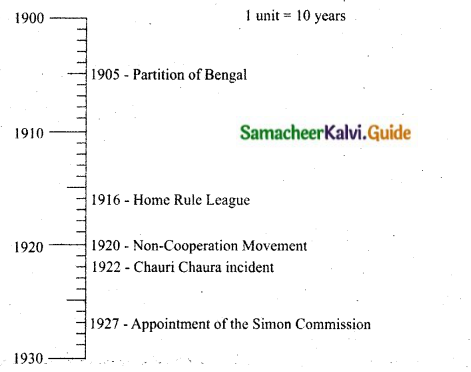
![]()
Question 2.
Write any five important events between 1920 -1930.
Answer:
Given period: 1920 – 1930
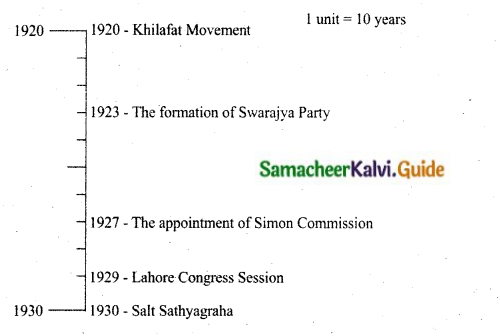
Question 3.
Write any five important events between 1930 -1947.
Answer:
Given period: 1930 – 1947
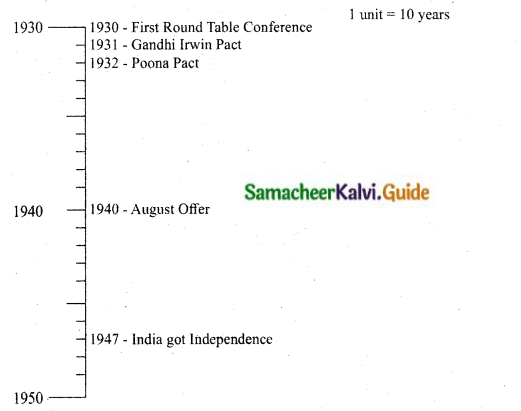
Question 4.
Write any five important events between 1931 -1945.
Answer:
Given period: 1931 – 1945
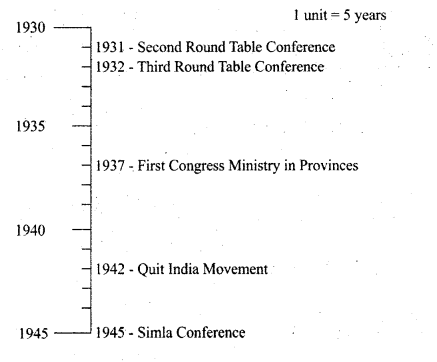
Question 5.
Write any five important events between 1937 -1947.
Answer:
Given period 1937 – 1947
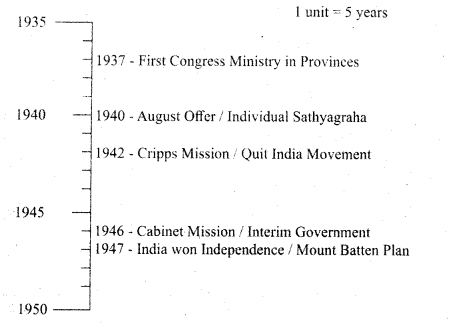
![]()
Question 6.
Write any five important events between 1906 -1925.
Answer:
Given period: 1906 – 1925
